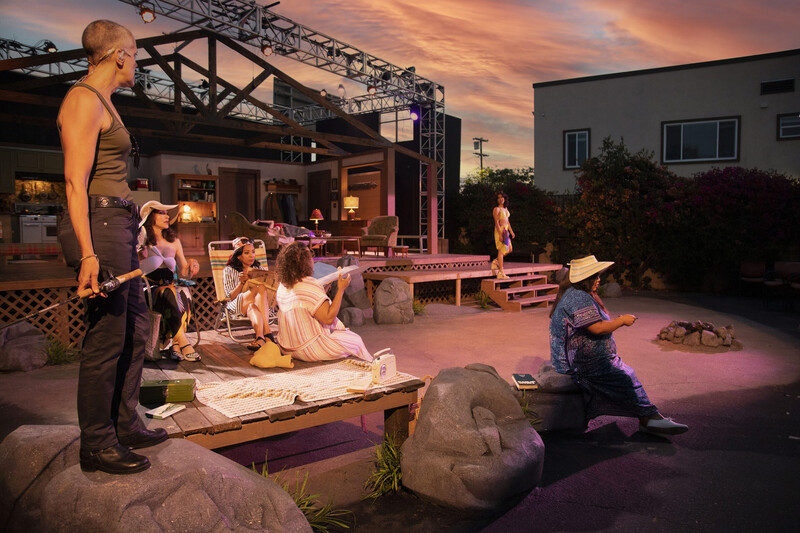RS Buck Accents Deep Characters in Last Summer at Bluefish Cove with CHAUVET Professional
Posted on December 20, 2023
LOS ANGELES – There are strong evocative feelings tied to time and place in Jane Chambers 1980 landmark play, Last Summer at Bluefish Cove. That’s often the case with cultural milestones, a category this play certainly fits into, being the first major lesbian drama. Lighting designer R.S. Buck and the rest of the production team certainly appreciated the significance of this when they worked on a recent production of the 43-year-old classic at the Fountain Theatre, but their vision extended beyond the play’s historical context to focus on the stories of the eight women portrayed in this compelling drama.
“As we worked on the play, we were less interested in highlighting it as a period piece, and more in showing the authenticity and relevance of these women’s stories,” said Buck. “So, all of us on the design team worked hard to create a world that didn’t distract any member of the audience from what was happening on stage. For lighting, that meant minimal subtle changes – with a very clearly visible rig of LED fixtures, which, of course didn’t exist 40 years ago. My goal was to be almost imperceptible, while contributing to the unfolding of the story.”
Helping Buck realize this goal was a lighting rig that featured 30 CHAUVET Professional fixtures from the theatre’s house rig and rented from Preston Productions. Included in this group were two Maverick Storm 1 Washes, 12 COLORdash H7 Pars, and six Ovation E-910FC ellipsoidals from the theatre’s rig, as well as two Maverick Storm 2 Profiles, two Rogue Outcast 2X Washes, and six Ovation Reve units from Preston Productions
Playing a key role in the lighting design were the two Maverick Storm 2 Profiles that Buck added to the house rig. Positioned FOH, the 580-watt fixtures were essential to creating the clean front lighting he envisioned.
“The Mavericks were great at front lighting the entirety of the playing space, and then shuttering off the front of the stage, the ceiling piece of the set, and the truss framing the stage,” said the LA-based designer. “While technically the same could have been done with many ERS fixtures, there wasn’t room on the truss towers, nor the time in the dark to focus.”
At turns witty and poignant, hopeful and tragic, the play follows eight women, each complex and unique, during a summer in the 1970s at a seaside enclave. Buck reflects the emotional lives of these women with lighting that is emotionally powerful without ever being overdone.

“We didn’t want to tell the audience what to feel, and went with a quasi-Brechtian approach,” said Buck. “So, I tried not to follow those journeys, with the exception of a few two minute, or longer, cues, when I deepened or changed the colors in the room and pulled focus for some of the key moments of the show. “
In keeping with this subtle approach, Buck lit most of the show in a warm flavor of white, with some medium ambers and blues used to track time from afternoon until night. There were only a few moments when the lighting pulled away from this realism, and moved into indigos and pinks for more romantic feels.
Light angles also played a key role in setting moods during this drama. “The set itself was on an angle from the stage as well as existing hanging positions, and the playing space went out into the audience, said Buck. “So, getting traditional angles just wasn’t an option. There were front lights, and side lights, etc., but sometimes the front light was coming more from the side, and the side light more from the front.”
In the last scene of the play, lighting, like the story itself takes on a more dramatic turn. Lil, a key character in the drama has died of a terminal disease. She will spend no more summers at the Bluefish Cove. Her friends have gathered in a room to remember.
“Even without her in the room, we felt her presence,” said Buck. “Toward that end, this scene was actually the brightest. No one pull focus – they were all existing together as they discussed their futures, all equally important in the show. And in the final moments of the play, I gave the woman who has been perhaps the most affected by this death and still has discovered within herself power in her own world, the power over the lights as she moves onward.”